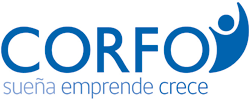
Chile Reforms R&D Law
By Conrad Von Igel, Executive Director, InnovaChile
Empirical evidence shows a direct relationship between a country’s level of investment in research and development (R&D) and its rate of economic growth and competitiveness. In Chile, investment in R&D stands at 0.4 percent of the gross domestic product (GDP), far below the average of countries in the Organisation for Economic Co-operation and Development (OECD), which is 2.3 percent of GDP. In an effort to stimulate R&D investment, the Chilean Congress recently amended the country’s R&D law (Law 20.241), to expand the tax credit available to foreign and domestic companies and introduce greater flexibility into the scheme.

Chile’s current law, enacted in 2008, encourages private investment in R&D by providing a tax credit of 35 percent for expenditure on R&D contracts with pre-certified, third party R&D centers. The lack of uptake in using the scheme, however, has been attributed to its many restrictions.
Under the new law, the tax credit ceiling for each company has been tripled to US$1.2 million per year. It further eliminates a provision in the 2008 law limiting the amount that could be claimed to 15 percent of a company’s gross sales. This did little to encourage start-ups and small and medium-sized enterprises (SMEs) to use the scheme. Businesses will now be able to claim tax relief for “in-house” R&D projects as well as those developed externally, and the new scheme has been extended to include a broad range of expenditure, including that associated with intellectual property (IP) protection. All IP protection expenses incurred in relation to obtaining and/or defending IP rights may now be claimed under the new scheme.
In an attempt to provide companies with more flexibility in the development of R&D projects, the new law also provides tax relief on R&D activity undertaken beyond Chile’s borders. If less than 50 percent of a company’s R&D activity takes place outside Chile, all related expenses are eligible for tax exemption. However, if more than 50 percent of a company’s R&D expenses relate to projects outside Chile, the tax exemption applies to all expenses incurred for projects in Chile and up to 50 percent of those relating to foreign R&D activity. Thus, companies will be able to benefit from this tax credit while also taking advantage of specialized R&D services that may only be available internationally.
Under the 2008 law, companies were able to obtain their tax credit certificate only for pre-certified activities. The new amendments introduce more flexible procedures that allow companies to acquire these certificates up to 180 days after the R&D project has started, in line with OECD best practices.
In introducing these changes, Chile hopes to attract foreign companies interested in undertaking R&D projects and to support domestic companies by facilitating the planning, approval and acceleration of R&D investment decisions. A key goal is to provide more companies with the support they need to establish R&D departments and stable innovation routines, with a view to promoting the country’s productivity, competitiveness and economic development.
The WIPO Magazine is intended to help broaden public understanding of intellectual property and of WIPO’s work, and is not an official document of WIPO. The designations employed and the presentation of material throughout this publication do not imply the expression of any opinion whatsoever on the part of WIPO concerning the legal status of any country, territory or area or of its authorities, or concerning the delimitation of its frontiers or boundaries. This publication is not intended to reflect the views of the Member States or the WIPO Secretariat. The mention of specific companies or products of manufacturers does not imply that they are endorsed or recommended by WIPO in preference to others of a similar nature that are not mentioned.